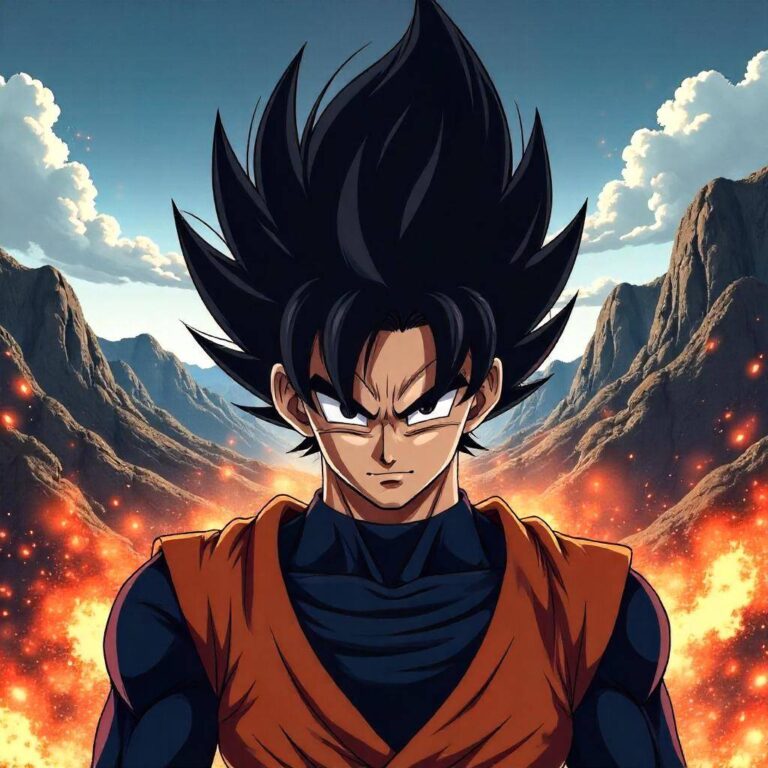Reader’s Question:
I have a question about Dragon Ball! Is Gohan from the Buu Saga stronger than Gohan from Resurrection ‘F’?
Analyzing the Power Dynamics of Gohan in Dragon Ball: A Comprehensive Examination
In the vast universe of anime, few franchises have resonated as powerfully with audiences as Dragon Ball. Among its
diverse cast, Gohan stands out as a character with a complex journey and fluctuating power levels. The question posed—whether Gohan from the Buu Saga is stronger than Gohan from Resurrection ‘F’—invites not just a debate on power scaling, but an exploration of the character’s psychological evolution, narrative significance, and the broader implications within the anime industry.
Background Context: Gohan’s Evolution
Gohan’s character arc is emblematic of the shifts within the Dragon Ball narrative. Initially introduced as a timid child with immense latent potential, Gohan transforms into a powerful warrior over the course of the series. His ascension to power in the Buu Saga, where he achieves the Ultimate form (or “Mystic” form), is a pivotal moment in the series. This transformation symbolizes both physical strength and a psychological maturation—a departure from relying solely on his father, Goku, and a step toward embracing his own identity as a fighter. In contrast, Resurrection ‘F’ presents a Gohan who has ostensibly lost much of the vigor that defined his earlier battles. By this time, Gohan has shifted focus towards his studies and family life. While he still possesses considerable power as a Super Saiyan, his character seems to lack the drive and determination exhibited during the Buu Saga. This difference raises critical questions about how power is represented in the series—not just in terms of physical abilities, but through character motivation and development.
Power Scaling: Buu Saga vs. Resurrection ‘F’
To analyze whether Gohan from the Buu Saga is stronger than his Resurrection ‘F’ counterpart, it is essential to consider the context and implications of power scaling in Dragon Ball. In the Buu Saga, Gohan reaches his Ultimate form, which is suggested to be on par with or stronger than Super Saiyan 3 Goku. This peak performance is a culmination of hard work and emotional determination, as he fights not just for himself but for the future of his loved ones. The Ultimate Gohan is effectively an embodiment of raw power combined with superior martial arts skills, making him a formidable opponent against Majin Buu. Conversely, Gohan in Resurrection ‘F’ displays a significant decrease in his fighting capabilities. Despite his training under Piccolo, he appears to struggle against both Frieza’s forces and even the lower-ranked warriors. This regression can be interpreted both narratively and psychologically. Gohan’s reduced power level reflects a shift in priorities; he is no longer solely defined by his combat abilities. As he embraces his role as a scholar and family man, this transformation highlights a crucial theme in Dragon Ball: the balance between personal growth and martial prowess.
The Psychological Aspects of Gohan’s Character Development
From a psychological perspective, Gohan’s journey illustrates the concepts of identity and self-actualization. In the Buu Saga, Gohan’s identity is heavily intertwined with his abilities as a fighter. His transformation into Ultimate Gohan signifies not just a physical change but also a moment of self-discovery—an acknowledgment of his potential that had previously been overshadowed by Goku’s legacy. However, by the time of Resurrection ‘F’, Gohan exhibits what psychologists might term “identity diffusion.” His focus on academics and family suggests a struggle to reconcile his dual identities as both a scholar and a warrior. This internal conflict can lead to diminished motivation in the martial arts arena; without the fierce impetus that drove him during the Buu Saga, Gohan’s fighting spirit wanes. This psychological exploration raises deeper questions about the nature of power in anime. For Gohan, power is not merely a number but a reflection of his commitment, identity, and emotional state. His struggle invites viewers to contemplate their own lives—how do we measure our worth? Is it through achievements, relationships, or an amalgamation of both?
Legal and Ethical Considerations in Character Development
Considering Gohan’s character through a legal lens, one might reflect on the ethical responsibilities of creators in shaping character arcs. The anime industry thrives on character development, yet it also bears the burden of representation and narrative integrity. Gohan’s regression in power raises ethical questions: Does this portrayal of a once-mighty character reinforce stereotypes about masculinity, portraying strength as an essential quality of a “man”? Moreover, the portrayal of Gohan’s choices leading to diminished combat abilities can spark discussions about the societal pressures that dictate the paths individuals take. Creators have a responsibility to depict characters that resonate with the complexities of human experience, rather than adhering to simplistic tropes.
Storytelling Ethics: Narrative Choices and Character Arcs
The narrative choices in Dragon Ball regarding Gohan’s character arc invite scrutiny from a storytelling perspective. Gohan’s transformation from a powerful fighter to a more subdued role in Resurrection ‘F’ represents a shift in focus toward character development over sheer power dynamics. This decision, while reflecting a realistic approach to character growth, can polarize fans who desire the relentless action typical of earlier arcs. It also poses the question: should narrative arcs prioritize character depth at the expense of action? While many fans prefer thrilling battles, the emotional weight of Gohan’s journey offers a rich alternative. The balance between action and character development is a delicate one that anime creators must navigate carefully.
Cultural Impact and Community Responses
The cultural impact of Gohan’s character evolution is significant, particularly in how it resonates with audiences. Many fans identify with Gohan’s struggle to balance personal ambitions with external expectations. He embodies the conflict between societal norms and individual desires—issues that are universally relatable. Viewer responses often reflect a desire for authenticity in character development. Fans may argue that Gohan’s regression undermines his significance as a character, while others appreciate the nuanced portrayal of a multifaceted individual. This diversity of opinion fosters a rich dialogue within the anime community, encouraging broader discourse on themes of identity, responsibility, and the nature of strength.
Practical Insights for Creators and Viewers
For creators aiming to craft compelling characters, Gohan’s journey serves as a case study in character depth and emotional resonance. Here are some practical insights: 1. Embrace Complexity: Characters should be multifaceted, reflecting the complexities of real-life individuals. Emphasizing internal conflicts can lead to more relatable and engaging narratives. 2. Balance Action with Depth: While action is a core element of many anime, integrating character development can create a more immersive experience for the audience. Strive to balance thrilling combat with meaningful storytelling. 3. Consider Cultural Context: Understand the cultural implications of character portrayals. Be mindful of reinforcing stereotypes and strive to create characters that challenge societal norms. 4. Engage with Your Audience: Foster discussions with fans about character development. Their perspectives can provide valuable insights and inspire future storytelling directions.
Conclusion: Gohan’s Legacy in Dragon Ball
Ultimately, the debate regarding Gohan’s strength in the Buu Saga versus Resurrection ‘F’ is emblematic of broader themes within the Dragon Ball narrative. Gohan’s journey reflects the evolution of identity, the struggles of self-actualization, and the ethical responsibilities of creators in shaping character arcs. As fans engage with Gohan’s story, they are invited to reflect not only on his power levels but on the deeper implications of his choices and growth. The character of Gohan serves as a poignant reminder that true strength lies not just in physical power but in the courage to navigate one’s personal journey. I invite you, as a reader, to share your experiences and reflections on Gohan’s character. How do you interpret his evolution? What does it mean to you? Your insights can enrich this ongoing conversation about the complexities of character development in anime.



